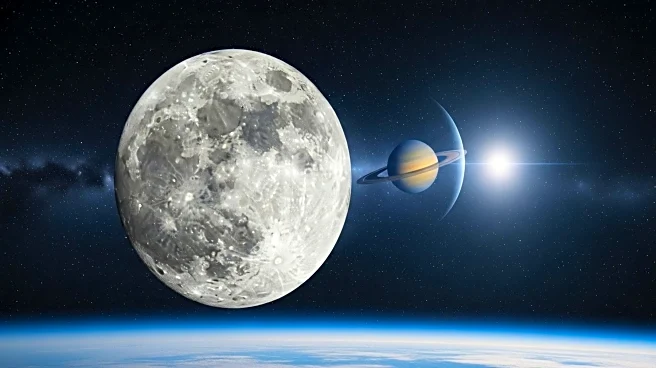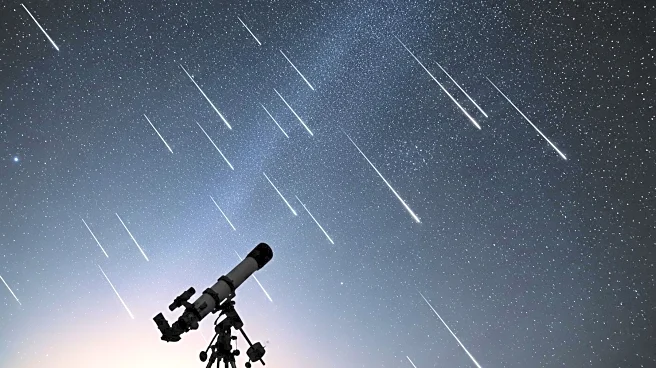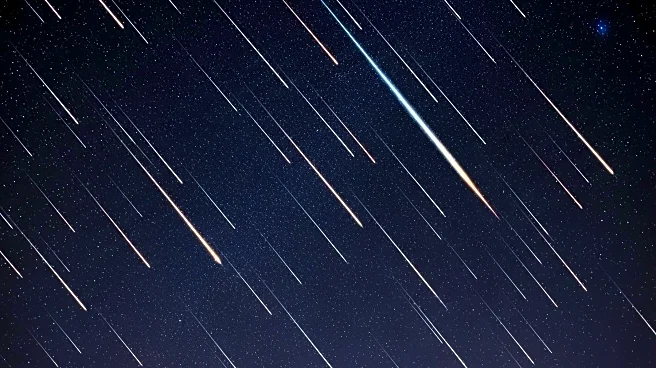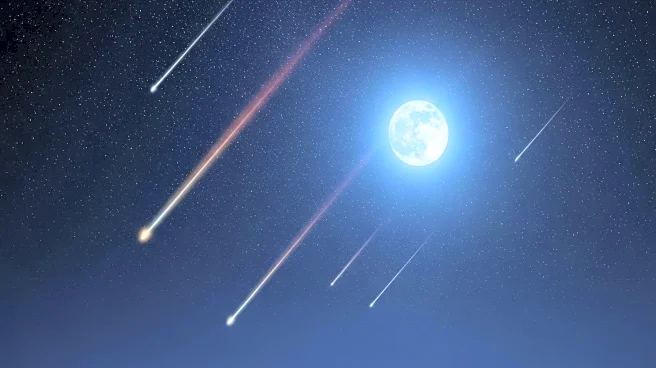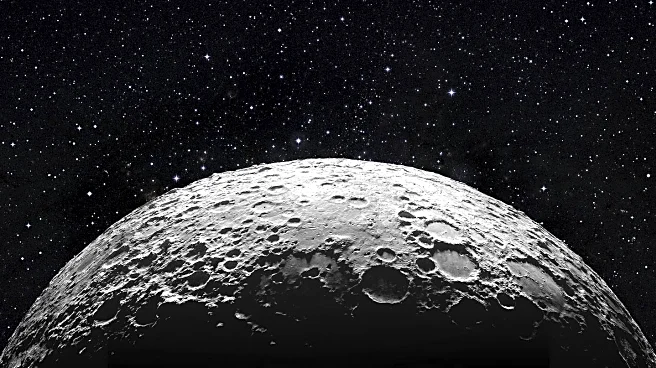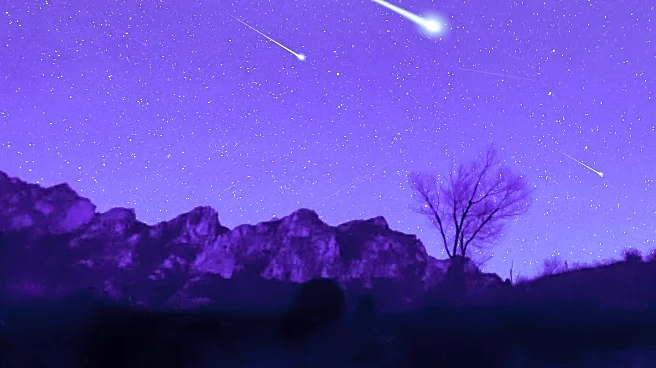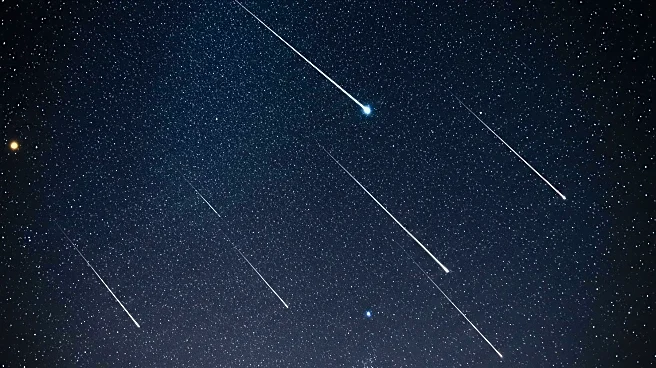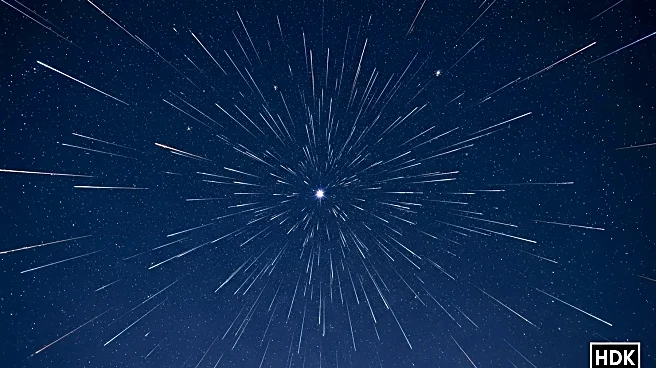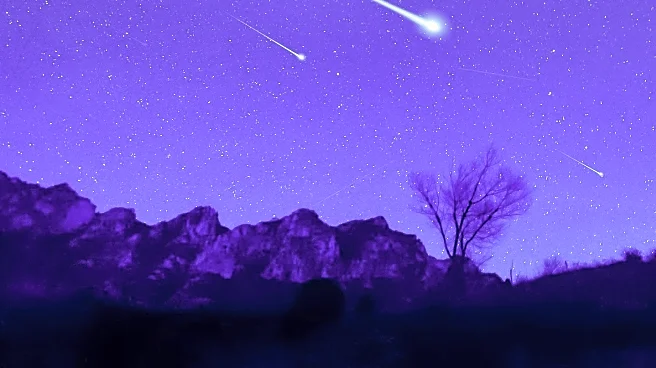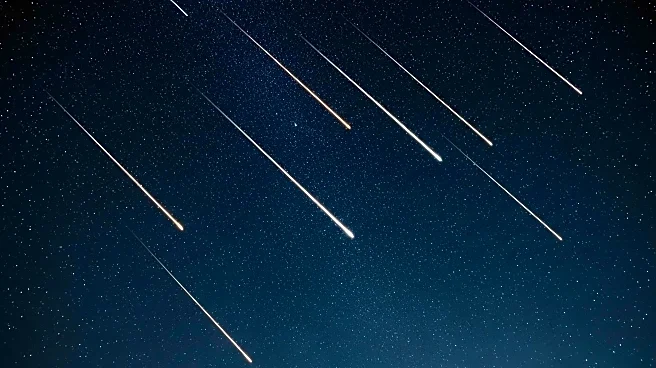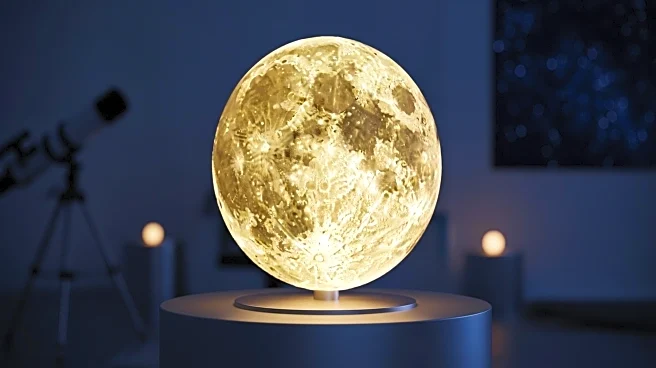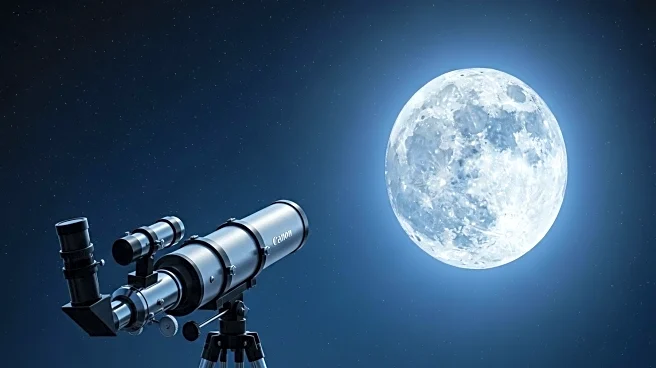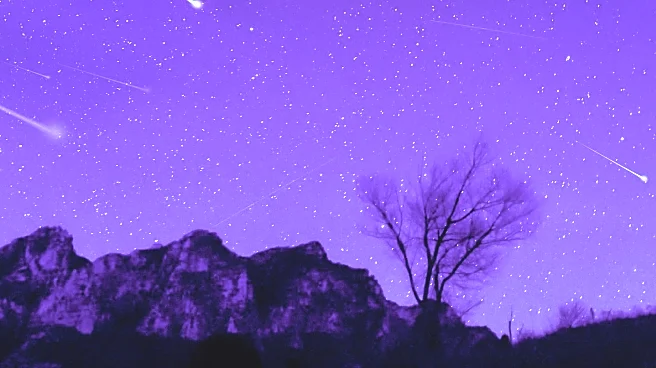What is the story about?
What's Happening?
NASA is spearheading a global event on October 4, 2025, known as International Observe the Moon Night, with over 950 events worldwide. This initiative encourages public engagement with lunar science through moon-gazing parties and educational activities. The event coincides with the appearance of the Harvest Supermoon, which will be 30% brighter and 14% larger than usual due to its proximity to Earth. On October 5, the Moon will align closely with Saturn, offering a unique viewing opportunity for skywatchers. The Draconid meteor shower is also active, although its visibility is hindered by the bright supermoon.
Why It's Important?
This event highlights the importance of public engagement in science and astronomy, fostering curiosity and education about lunar science and celestial phenomena. The supermoon and Saturn's conjunction provide a rare opportunity for amateur astronomers and the general public to observe and appreciate the night sky. The event also underscores NASA's role in promoting scientific literacy and community involvement in space exploration. The visibility of celestial events like the Draconid meteor shower, despite being affected by moonlight, adds to the excitement and educational value of the weekend's skywatching activities.
What's Next?
Following the supermoon and Saturn conjunction, skywatchers can look forward to the Orionid meteor shower peaking on October 21, 2025, under ideal conditions with no moonlight interference. This upcoming event promises better visibility and a higher meteor count, offering another opportunity for public engagement and appreciation of celestial phenomena. NASA and other organizations will continue to provide resources and support for amateur astronomers and the public to participate in these events, fostering ongoing interest in astronomy and space science.
Beyond the Headlines
The alignment of Saturn and the Moon serves as a reminder of the vast distances and scales involved in space, offering a humbling perspective on our place in the universe. The event also highlights the role of technology and scientific collaboration in making such observations accessible to the public. The ongoing interest in celestial events reflects a broader cultural and scientific appreciation for space exploration and the mysteries of the universe.
AI Generated Content
Do you find this article useful?
